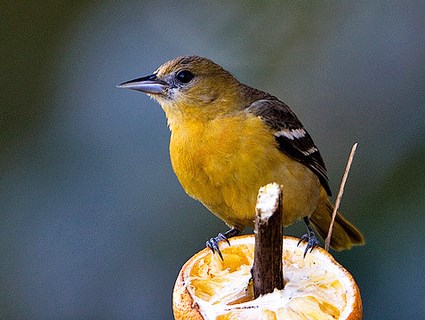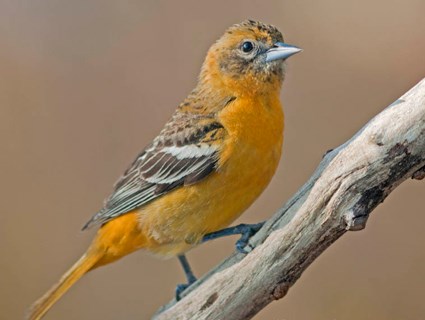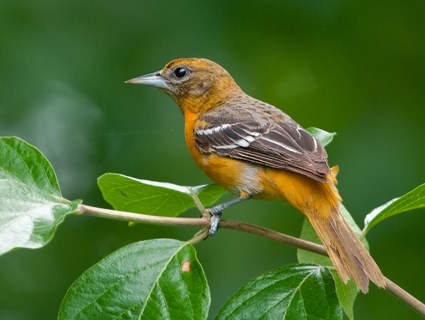A pair of Baltimore orioles appeared to feed on Cutie tangerine halves a few days ago. It seems our next door neighbor must be providing a more abundant supply of preferred food as they seem to be sporadic visitors at our feeders. Interestingly I first observed them eating seed at our green-roofed birdhouse on the deck and have observed them returning to look for more seed. Maybe adding grape jelly to our offerings will entice them to spend more time visiting our feeders.
Baltimore Oriole
Few birds can match the bold coloring of the male Baltimore oriole, with it's signature black and orange feathers.
Scientific Name: Icterus galbuba.
Family: Blackbird.
Length: 8-3/4 inches.
Wingspan: 11-1/2 inches.
Distinctive Markings: Male has full black hood and fire-orange plumage. Female is drab yellow with dusky-brown wings.
Nest: Woven bag-like structure.
Song: Short series of clear whistles in varied pattern.
Habitat: Deciduous woodlands, parks and suburbs.
Diet: Mostly insects and berries.
Backyard Favorites: Comes to feeding stations for sugar water, halved oranges nailed to posts and grape jelly.
To listen to the oriole's songs at Birds and Blooms:
http://www.birdsandblooms.com/Birds/Most-Wanted-Birds/Baltimore-Oriole
The pair of orioles appeared to travel back and forth between our yard and our next-door neighbors yard depending upon supplies available. (Since he grows grapes and cans grape jelly, I suspect he has an advantage.) According to the Journey North maps, Baltimore Orioles were fisrt spotted in NE Wisconsin in mid-May.




















































